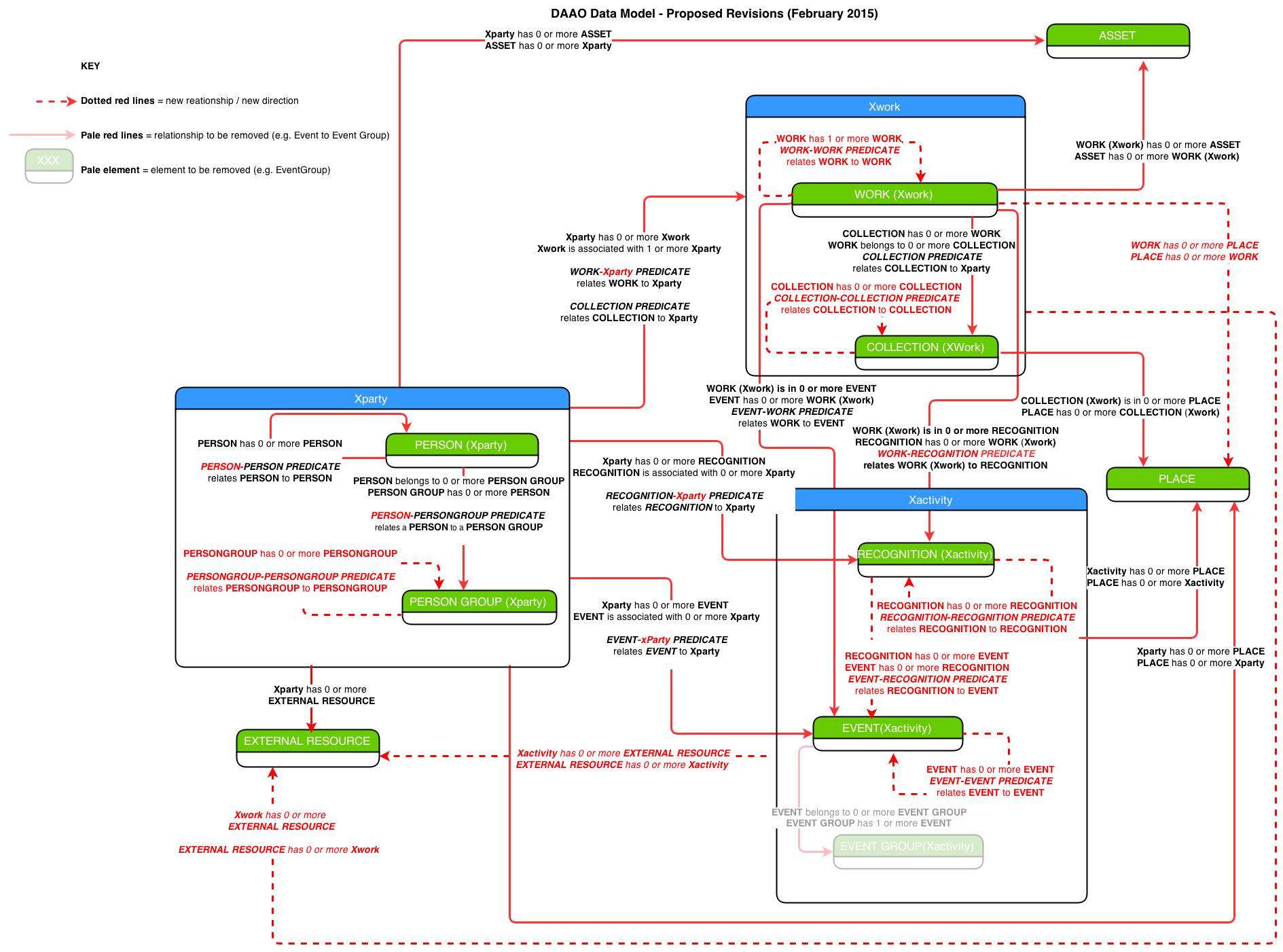A key deliverable of our current LIEF grant is to refine DAAO’s Events and Works schema to better match researcher queries.
While this is a refinement, not a rebuild, the team has put considerable effort into ensuring that proposed changes are fit for purpose and meet accepted standards. Dr Anne Cregan, our Semantic Adviser, established our approach of reviewing the data model in full, rather than focussing exclusively on Events and Works entities. This approach means any change is considered against the bigger picture and other possible future needs that are out of scope of this current LIEF. Somaya Langley, our Data Manager, further developed the proposed refinements, referencing the FRBR00 conceptual model to help us respond to questions like ‘How do we accurately represent work that is performative, temporally and spatially extended, or iterative in nature?’. *Note that we have not adopted the FRBRoo model in full, that would be a massive and complex undertaking. We’re simply using the model as a guide for our Works/Events changes.
Click diagram for full-scale view.
These refinements are based on feedback from CIs and DAAO users. Some of the questions and issues the model responds to include:
- How to collect data where the line between a WORK and an EVENT becomes blurred, such as in performative work.
- How to collect data on groups of WORKS such as series, installations made up of many WORKS, WORKS that evolve into new WORKS, ‘impermanent or abstract groupings.’
- How to collect complex relationships between groups of EVENTS while not locking the user in to a predefined hierarchy.
- How to collect data where the line between an EVENT and a RECOGNITION become blurred.
- How to collect data on collectives and organisations that work together.
- How to correctly attribute and show collaboration between DAAO artists/designers and non-artists or international artists for whom we do not collect full records.
- How to represent critical response to WORKS and EVENTS.
- How to investigate where Exhibition funding comes from.
- How to record more less concrete relationships between people, such as ‘Protege of/Mentor of’, Influenced/Influenced by’ etc.

